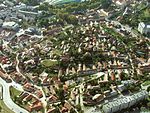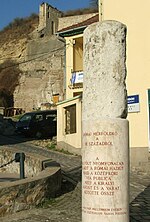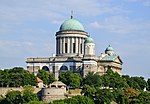Esztergom County
1543 disestablishments1786 disestablishmentsCounties in the Kingdom of HungaryEsztergomStates and territories disestablished in 1920 ... and 6 more
States and territories disestablished in 1923States and territories disestablished in 1945States and territories established in 1690States and territories established in 1790States and territories established in 1938States and territories established in the 10th century

Esztergom County (Latin: comitatus Stringoniensis, Hungarian: Esztergom (vár)megye, Slovak: Ostrihomský komitát / Ostrihomská stolica / Ostrihomská župa, German: Graner Gespanschaft / Komitat Gran) was an administrative county of the Kingdom of Hungary, situated on both sides of the Danube river. Its territory is now divided between Hungary and Slovakia. The territory to the north of the Danube is part of Slovakia, while the territory to the south of the Danube is part of Hungary.
Excerpt from the Wikipedia article Esztergom County (License: CC BY-SA 3.0, Authors, Images).Esztergom County
Szent János-kúti út, Esztergomi járás
Geographical coordinates (GPS) Address Nearby Places Show on map
Geographical coordinates (GPS)
| Latitude | Longitude |
|---|---|
| N 47.8 ° | E 18.75 ° |
Address
Szent János-kúti út
Szent János-kúti út
2500 Esztergomi járás, Szentjánoskút
Hungary
Open on Google Maps











